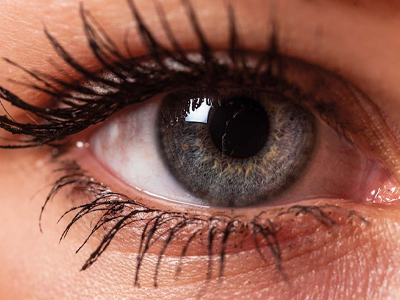Writer William Shakespeare said that the eyes are the window to the soul. But now a new study has shown that the eyes are also the window of the brain. No need to be surprised. Your eyes tell how intelligent you are. The pupils present in the center of the eyes are responsible for this. The pupils of the eyes not only process light, but they also tell about excitement, interest and mental fatigue. The American investigative agency FBI investigates the dilation of the pupils to find out whether the criminal is deceiving them. He’s not telling a lie. Examining the pupils is an important part of their investigation. Let us know how the size of the pupils tells how intelligent you are?
An experiment conducted at the Georgia Institute of Technology has shown that the baseline size of the pupils is directly and closely related to human intelligence. It has been found in the experiment that the bigger the pupils, the more intelligent a person is. His reasoning, attention ability and memory will be more powerful.
Researchers at the Georgia Institute of Technology said they conducted three separate studies. In all three it was found that those who took part in the cognitive test and scored higher had larger baseline size of their pupils. Whereas, those who got low scores had little intelligence. None of these volunteers was such that they had any kind of device on their eyes. For example, glasses or lenses etc. The size of the pupils makes a difference in the intelligence of different people.
Scientist Daniel Kahneman has claimed that he has done such a study for the first time, in which the mental capacity demonstrated by different humans in completing an intellectual task. The dilation of the pupils of people’s eyes tells their mental capacity. This method of testing intellectual ability became very popular in the 1960s and 70s. After that it started being used in medical science and crime investigation. When our team began examining the relationship between baseline size of the pupils and intelligence, we didn’t know if this would prove to be true or it would mean something else.
Daniel told that we have done this study on a large scale. We included more than 500 people aged 18 to 35 years in this study. These people were from Atlanta. We measured the size of each volunteer’s pupils with an eye tracker. An eye tracker is a device that monitors the reflection of light from the pupil and the cornea with a high-powered camera and computer. After this we showed each volunteer a computer screen on which nothing was visible. They were asked to look at the monitor for 4 minutes. During this recording of his pupils was being done. We then found the average size of each volunteer’s pupils.
The size of the pupils means the diameter of the black center between the eyes. It ranges from 2 to 8 millimeters. There is an iris around the pupils, which is made up of a mixture of different colors. This also controls the size of the pupils. The pupils constrict in bright light, which is facilitated by the iris. Therefore the illumination in the laboratory was kept at a moderate level, so that the pupils were fully open.
In the second part of the experiment, the scientists asked the volunteers to take a variety of cognitive tests. Through this test, scientists were examining fluid intelligence. That is, what is the human argument on new problems. What is his active memory capacity? How many things can you remember for how long? What is the ability to pay attention in the face of obstacles? That is, how much a person is able to focus at the time of disturbance. In this test, the volunteers were asked to focus on the star mark and the alphabet while moving around different corners of the computer screen.
The biggest obstacle of this test was that the alphabet used to come on the screen for a very short time. That too moving at high speed. If you pay more attention to the star mark, then neither will you be able to see the alphabet nor recognize it. The good thing is that humans have the ability to recognize the thing that comes in front of their vision. With this ability, he recognizes the danger that arises for himself or is in front of him. In this task, people were asked to focus on the alphabet along with the star mark. which was difficult.
Daniel said that when we looked at the results, it was found that people who had larger pupils also had more fluid intelligence. There was the ability to control the ability to pay attention. Also active memory ability was also better. This is a surprising connection between the eyes and the brain. Generally people associate the size of the pupils with increasing age in a negative way. Because the pupils of the elderly become smaller. Shrinks too much. But this does not affect his intelligence.
What is its biology? The connection of the pupils is connected to the nucleus locus coeruleus located in the upper part of the brain. The neural connections of this nucleus are connected to other parts of the brain. The locus coeruleus releases a substance called norepinephrine, which is a neurotransmitter and hormone. This is the only connection between the mind and the body. It is because of this that the process of forming an image of what the eyes are seeing, or of what the body is feeling, the ability to pay attention and learn, or memory, begins.
People have breakdowns due to the inability or non-functioning of the locus coeruleus. Sometimes the reason for working is also diseases like Alzheimer’s. There may also be a disease called Attention Deficit Hyperactivity Disorder (ADHD). Therefore the brain puts all its energy into making the locus coeruleus work properly. This energy is used even when we are not doing much or any work. Even if we look at an empty space or screen, the brain continues to transmit energy to the locus coeruleus.
One possible theory also states that people with larger pupils have more activity in the locus coeruleus in their brains. Due to this, the cognitive ability of people increases and their brain activity also increases. Such studies are needed in the future that can explain the relationship between fluid intelligence and attention control in people with large pupils.

![Buddha Purnima 2025 [TKB INDIA]](https://topknowledgebox.com/iphaphoo/2025/05/12052025-150x150.jpg)
![YouTube is about to turn 20, the company announced many big features [TKB Tech]](https://topknowledgebox.com/iphaphoo/2025/04/28042025-150x150.jpg)
![Basant Panchami 2025: Know the correct date and auspicious time [TKB INDIA]](https://topknowledgebox.com/iphaphoo/2025/01/31012025-150x150.jpg)

![Amazing feature of WhatsApp, you will be able to reply without listening to the voice message[TKB Tech]](https://topknowledgebox.com/iphaphoo/2024/11/24112024-150x150.jpg)





More Stories
The color of rivers in Alaska turned orange, scientists are surprised by this unknown change [TKB Science]
Asia’s largest liquid mirror telescope installed in Nainital, will reveal the secrets of space [TKB Science]
Powerful earthquake in New Zealand, intensity was 7.0 on Richter scale [TKB Science]